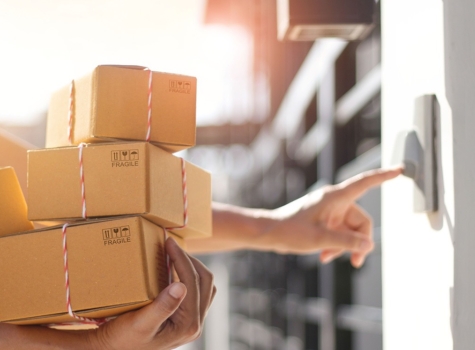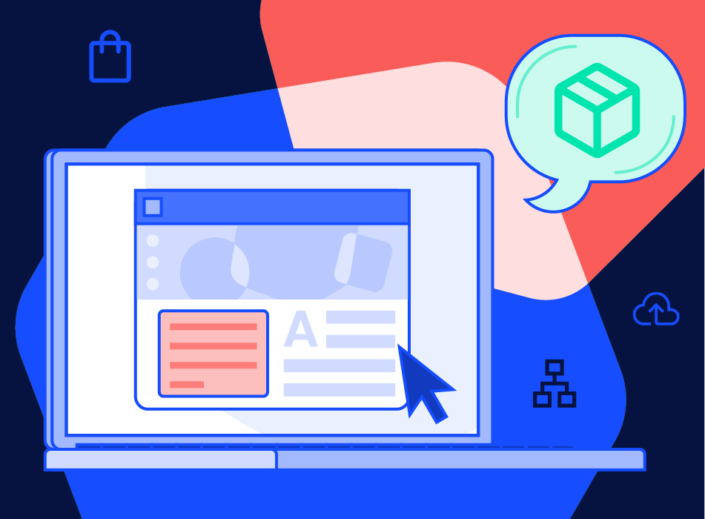Ask any company that needs to ship about their pain points and you’ll hear comments about shipping rates, carrier reliability, or accurate tracking. You’ll also universally hear last-mile delivery.
Otherwise known as final-mile delivery, last-mile delivery represents the most costly and time-consuming portion of the shipping process where the package goes from the final warehouse, post office, or delivery center onto a truck and to the customer’s door or a pick-up site. A recent Business Insider article even claimed that last-mile delivery equates to 53% of the total shipping cost!
For shippers, the final mile also represents a period of heightened customer awareness and concerns. As ecommerce consumers, we have all experienced the expectant sensation of receiving a notice that an order is out for delivery followed by the dreaded waiting period. Or, the unfortunate situation when a package is marked as delivered, but is nowhere to be seen until you scavenge and finally find it behind the one bush next to your garage.
Multiply these situations by the millions of packages delivered daily and it is easy to understand the unique challenges presented in the last-mile delivery.
The last-mile delivery process
The last-mile delivery process can be divided into three key phases, each with unique complexities.
1) Order preparation
Tracking begins and the package awaits delivery to the final customer.
At this step, the package(s) arrive at a central transportation hub and speed is imperative. The final recipient monitors each step via a tracking number and expects a fast and reliable experience.
2) Order designation and loading
Delivery personnel receive the package(s) and prepare for delivery.
Here, shippers must deploy logistics solutions to accurately and effectively designate packages for delivery depending on routes and final destination addresses. Organization is of the utmost importance. Then, orders are loaded onto delivery trucks with a notification to the end customer of the pending delivery. A tracking update at this stage, more than supporting customer experience, also reduces the risk of losing orders to theft or other varying circumstances along the way.
3) Order delivery
Successful delivery and notification.
Once the package reaches its final destination, proof of delivery is submitted and shared with the customer.
Solutions to last-mile delivery challenges
While complex, especially as more and more customers expect fast, free, and accurate shipping, last-mile delivery is becoming easier to manage. This is thanks in large part to new technologies laser-focused on providing solutions to the various pain points associated with last-mile delivery.
Fleet management & route optimization tools
In the last ten years, the shipping industry has seen the birth of many new fleet management and route optimization tools that focus on end-to-end route planning, dispatch, real-time driver tracking, communication, analytics, and more – all to ensure the successful execution of last-mile delivery. These software solutions provide a myriad of rich features. Route optimization, for instance, can minimize the total delivery time by considering traffic, location, capacity, and time to disclose the most efficient routes.
Additionally, real-time tracking, like that provided by EasyPost’s Tracking API, provides crucial improved visibility to the delivery process for shippers, while also allowing them to pass that knowledge onto their customers and improve the overall user experience.
Tapping into multiple carriers
Relying on one carrier for all of your shipping needs is a risky strategy. In the case that something goes wrong with your carrier, whether it be delays, backups, rate increases, etc., you’re stuck suffering the consequences.
One major benefit of a robust multi-carrier shipping API is the ease of zone skipping, also referred to as direct injection or hub induction. Zone skipping is the process of consolidating multiple customers’ orders during the first leg of the delivery and transferring them to a parcel carrier network during last-mile delivery.
Zone skipping by way of a multi-carrier shipping API simplifies the shipping process and improves the customer experience. Shippers can also take advantage of the increased flexibility that comes with zone skipping by selecting regional carriers for optimal delivery timelines.
Evolution of last-mile delivery channels
As ecommerce has grown, last-mile delivery channels evolved to accommodate alternate delivery options. Amazon’s purchase of Whole Foods opened the opportunity for Amazon pick-up lockers at Whole Foods stores, for instance. Likewise, Amazon was the first to introduce the concept of drone package delivery, and in 2016, McKinsey predicted a world where robots and drones deliver 78% of goods. While not yet widespread in use, the not-so-distant future may well find us seeing drones and robots delivering our packages regularly.
Gig delivery
In that same vein, gig workers play an increasingly larger role in last-mile delivery. In fact, global gig-economy transactions are forecast to grow by 17% a year to around $455 billion by 2023, according to a report from Mastercard. That predicted growth means future ecommerce companies may likely look to digital platforms that connect freelancers with customers for their last-mile deliveries.
Final thoughts
As you tackle your last-mile delivery challenges, what creative solutions are you using? Are you deploying route optimization apps, or tapping into a multi-carrier shipping solution? We’d love to hear it. Whether you’re a small business or an enterprise-level shipper, EasyPost is your modern shipping partner to solve all your shipping and logistical challenges. Contact us today to take your ecommerce shipping solution to the next level.




